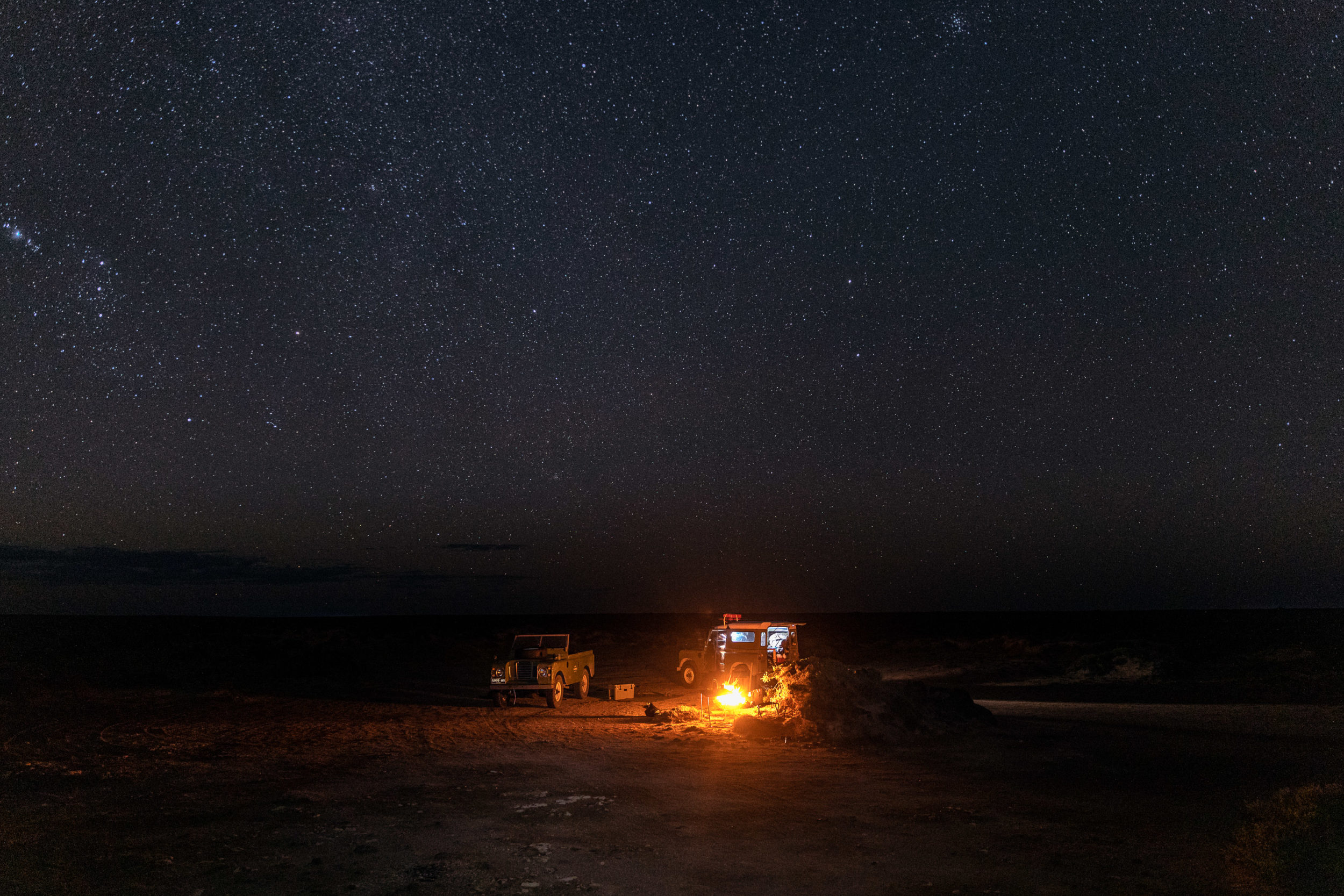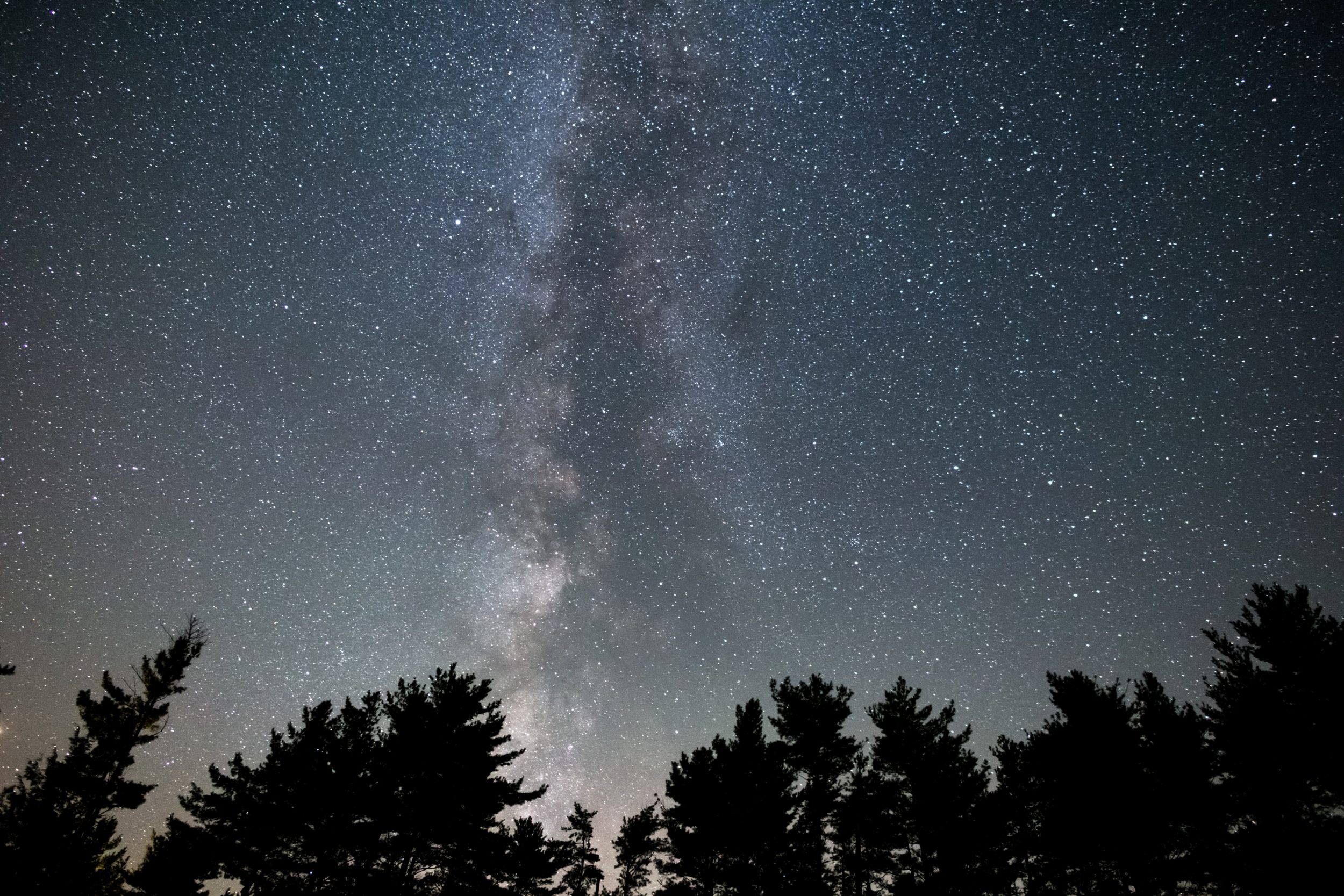Stargazing: A Beginner's Guide To The Night Sky
STORY BY DORON FRANCIS
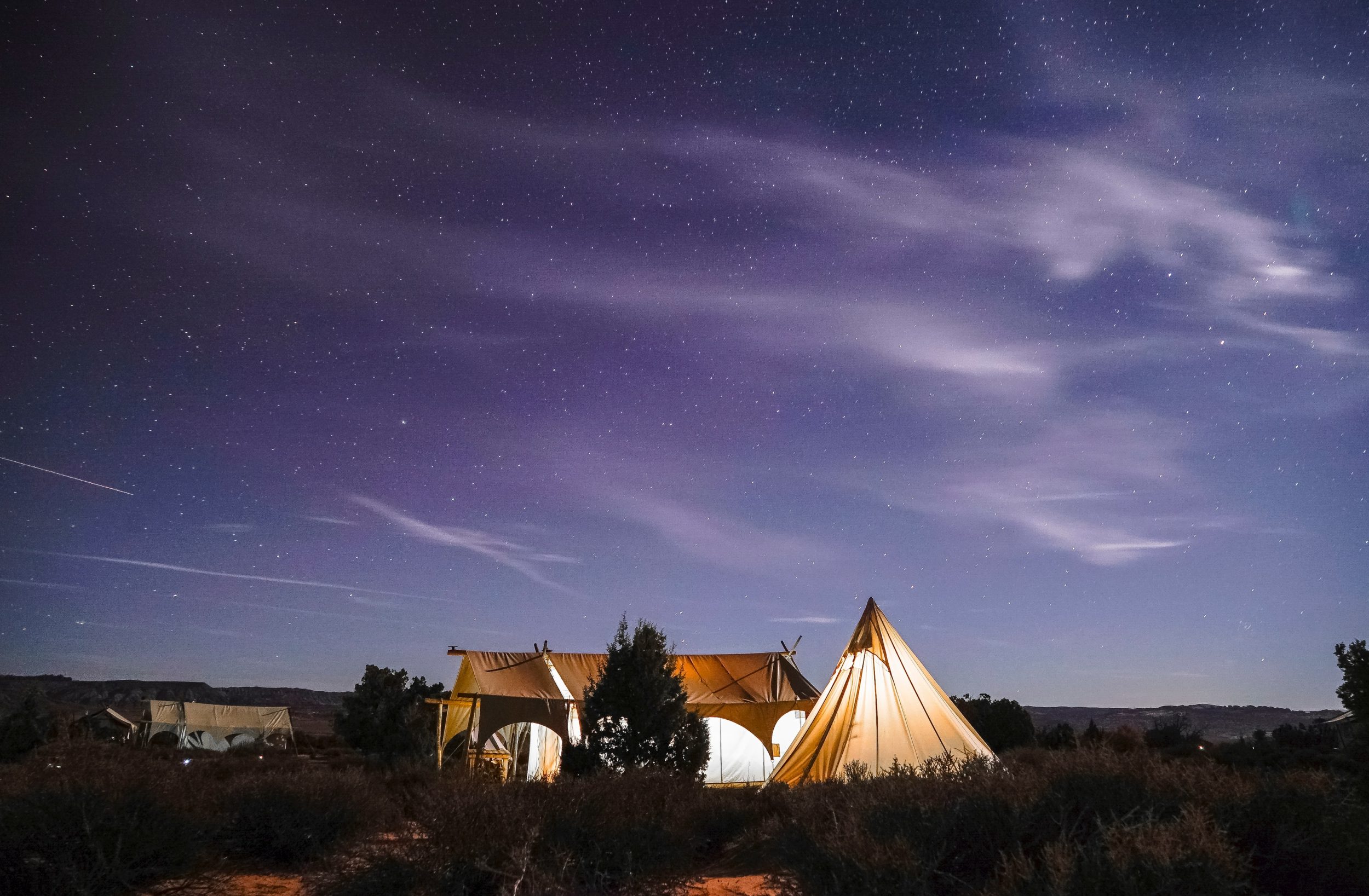
The universe is a big place! If you live in the city, the night sky probably doesn’t demand much of your attention. As you go about your busy life you’re absorbed by what’s at hand, and the macrocosm is often taken for granted.
One of the great joys of a camping trip is that you’re (ideally) away from light pollution where there’s a good chance that you’ll be exposed to the truly awe-inspiring presence of the cosmos. Having spent many nights camping in Australia, New Zealand and the United States where there’s plenty of wilderness unpolluted by artificial light, it can be quite a shock to witness the unfathomable vastness of the Milky Way above. Stargazing is a reminder of our tiny part within a potentially infinite universe. For me, watching a starry sky is always a healthy reminder to take stock and appreciate life and the majesty of nature.
For most of human history, stargazing around a campfire would have been a regular night-time activity. Almost all cultures have some sort of belief system that explains the origins of the
universe, the constellations and planets. The features of the heavens were incredibly important to our ancestors, not only for spiritual purposes and remembering their mythologies, but also as an essential tool for navigation.
Navigating by the stars
While identifying constellations and planets is a fun skill to learn and the basis of a good campfire yarn, it also gives you some reassurance knowing that in the absence of modern technology you could find your way by the stars.
Here’s a short guide to some popular constellations and asterisms (smaller group of stars within a constellation) and how they can help guide you. Depending on where you live – the Northern or Southern Hemisphere – you’ll have a different view.
Northern Verses Southern Hemispheres
From a human perspective, constellations always seem to be moving in the night sky depending on the time of year. This is because of the Earth’s own orbit, and its orbit around the sun. The Earth’s precession (axial tilt or ‘wobble’) also plays a part in how we view constellations, although this change is almost imperceptible during a human lifetime.
Because of this, each hemisphere has a different ‘view’ of the celestial dome and there are some constellations that are unique to the different hemispheres. These are called circumpolar constellations. Circumpolar constellations appear fixed and so can be used for navigation, and as signposts for finding other constellations. Not only is our view of the night sky determined by the Earth’s relative position to the sun, but the area of sky we view is also determined by our latitude and longitude.
Basic constellations for star navigation in the Southern Hemisphere
Asterism: Southern Cross
In the Northern Hemisphere, the Big Dipper is the constellation that most people can name and find in the night sky, while in the Southern Hemisphere, it’s the Crux Australis and its famous asterism, the Southern Cross.
The Southern Cross is made up of five stars which form an easily recognisable cross or kite shape. In southern parts of Australia, New Zealand, South Africa and Southern Chile, the Southern Cross appears fixed (circumpolar) in the night sky. The Cross’ two brightest stars – Acrux and Gacrux – point the way to
the Southern Celestial Pole and so are useful in navigation for finding the south.


Constellation: Orion
In the Southern Hemisphere, Orion is viewed ‘upside down’ when compared to the north and so takes on a different shape. In the south it’s commonly known as the Pot or Saucepan. The three stars of Orion’s Belt form the base of the pot, and the pot’s handle is Orion’s sword.



Star: Alpha Centauri
At only 4.37 light-years away, Alpha Centauri (or Alpha Cen) is the Earth’s nearest neighbouring star and planetary system. Because of this it’s on the spotting list of every serious stargazer. Alpha Cen appears as one star but it’s actually two stars orbiting each other, what’s known as a ‘binary’ system. Together they form the brightest star in the Centaurus constellation and the third brightest in the night sky.
To stargazers south of latitude 29°S (southern parts South Africa, Australia, New Zealand and South America) Alpha Centauri is circumpolar and so can be seen all year round. Alpha Cen is one of two bright stars that form the Southern Pointers, another tool in your kit for navigation and finding true south.





Stars: Southern Pointers
The Southern Pointers consist of two stars – Alpha Centauri and the close by (in galactic terms) Beta Centauri, which are just 390 light-years from each other. Both stars are part of the constellation of Centaurus and are collectively known as the Southern Pointers, as they are associated with the Southern Cross.
Viewed from the south, you’ll always find the Southern Pointers to the left of the Crux. They’re a helpful signpost to confirm you have found the Southern Cross, and not the nearby False Cross. Like the Summer Triangle, once found they’re not easily forgotten.



Coalsack Nebula (Emu in the Sky)
When looking south on a clear, moonless night in the Southern Hemisphere, you can find a dark interstellar cloud made up of dust and gas, known to many Aboriginal peoples as the Emu in the Sky.
The cloud is a dark nebula and is a prominent feature. It’s easy to find with the naked eye as it obscures the bright light from the Milky Way behind it. For some Aboriginal peoples, the emu watches over them as a law-man, ensuring that they don’t stray from their traditional laws.


While identifying constellations and planets is a fun skill to learn and the basis of a good campfire yarn, it also gives you some reassurance knowing that in the absence of modern technology you could find your way by the stars.
Basic constellations for star navigation in the Northern Hemisphere



Constellation: Orion
Also known as The Hunter, Orion was well-known to our ancestors and first appears in recorded history in the Sumerian creation myths, like ‘The Epic of Gilgamesh’. Egyptians, Babylonians and Aztecs all had Orion as an integral part of their myths.
One theory about the Giza pyramids in Egypt is that they were built to align with the three stars of Orion’s Belt. Orion is one of the most easily recognisable constellations in the Northern Hemisphere and is also a key constellation for navigation.
In winter, Orion takes the shape of a hunter with a bow and belt. Looking for Orion’s Belt is the easiest way to locate Orion in the night sky. Orion’s Belt is an asterism (sometimes known as Celestial Bridge, Three Kings and Three Sisters) made up of three very bright stars – Alnitak, Alnilam and Mintaka. Best viewed in the northern winter, Orion ascends towards the east in the early evening, moving across the night sky in a westerly direction through the night.
Orion can be used to locate other stars. For instance, if you extend Orion’s Belt to the south-east you’ll locate Sirius, the Dog Star (brightest star in the night-time sky). For countries in the Southern Hemisphere, Orion is viewed as the Pot or the Saucepan.



Ursa Major (Great Bear)
Ursa Major (or Great Bear) is a large constellation that was well known to Palaeolithic hunters and plays a notable role in many cultures and mythologies around the world. Ursa Major is probably most well-known for containing an asterism called the Big Dipper (aka Saucepan, Plough, Great Wagon).
The Big Dipper is a prominent group of seven bright stars that forms the shape of a ladle or saucepan. It’s the most easily recognisable star pattern in the Northern Hemisphere and is usually where beginners start in their quest to learn about the night sky.
The Big Dipper is often called a guide (or signpost start) because it’s used to find the position of other stars and constellations, including the most famous of navigation stars, Polaris (the North Star).


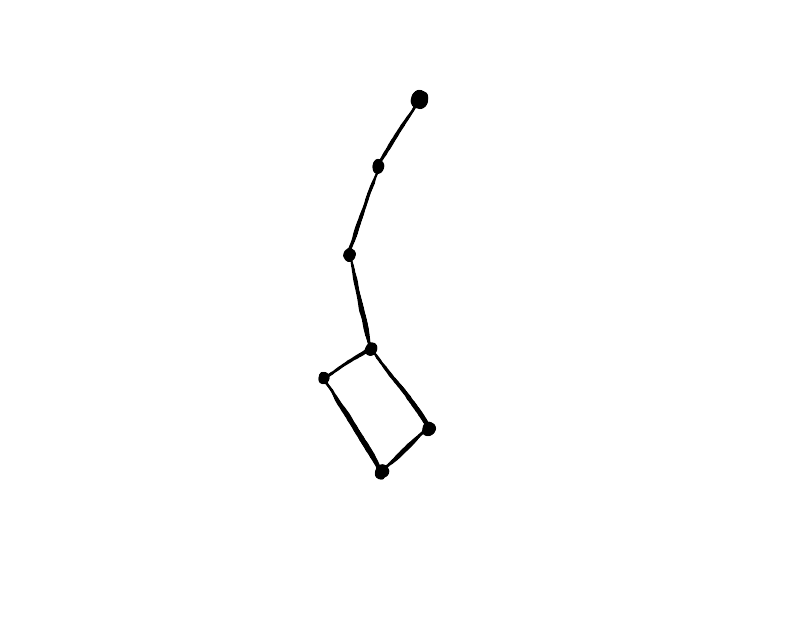


Constellation: Ursa Minor
Just like the Big Dipper, Ursa Minor contains a group of seven stars called the Little Dipper (or Little Bear) that also forms the shape of a ladle or saucepan. Although dimmer to the eye, the Little Dipper can also be used as a signpost for celestial navigation because the North Star is the last star on the Little Dipper’s handle.
In spring and summer, constellations such as the Big and Little Dippers are high overhead. In autumn and winter, they’re found much closer towards the horizon. This is where the saying, ‘spring up and fall down’ comes from.



Star: Polaris
Also known as the North Star and the Pole Star, Polaris is a yellow-white supergiant star. It’s the brightest visible star within Ursa Major and one of the brightest stars visible to the naked eye in the Northern Hemisphere.
Polaris lies close to the north celestial pole and, because of its position in relation to the Earth’s rotational axis, it appears to be almost fixed all year round. This is why it’s known as the North Star and identifying it is so important for navigation. Once you use your signpost – like the Big and Little Dipper – to find Polaris, you’ll have a fairly accurate fix on where north is. From there you can discover other constellations.
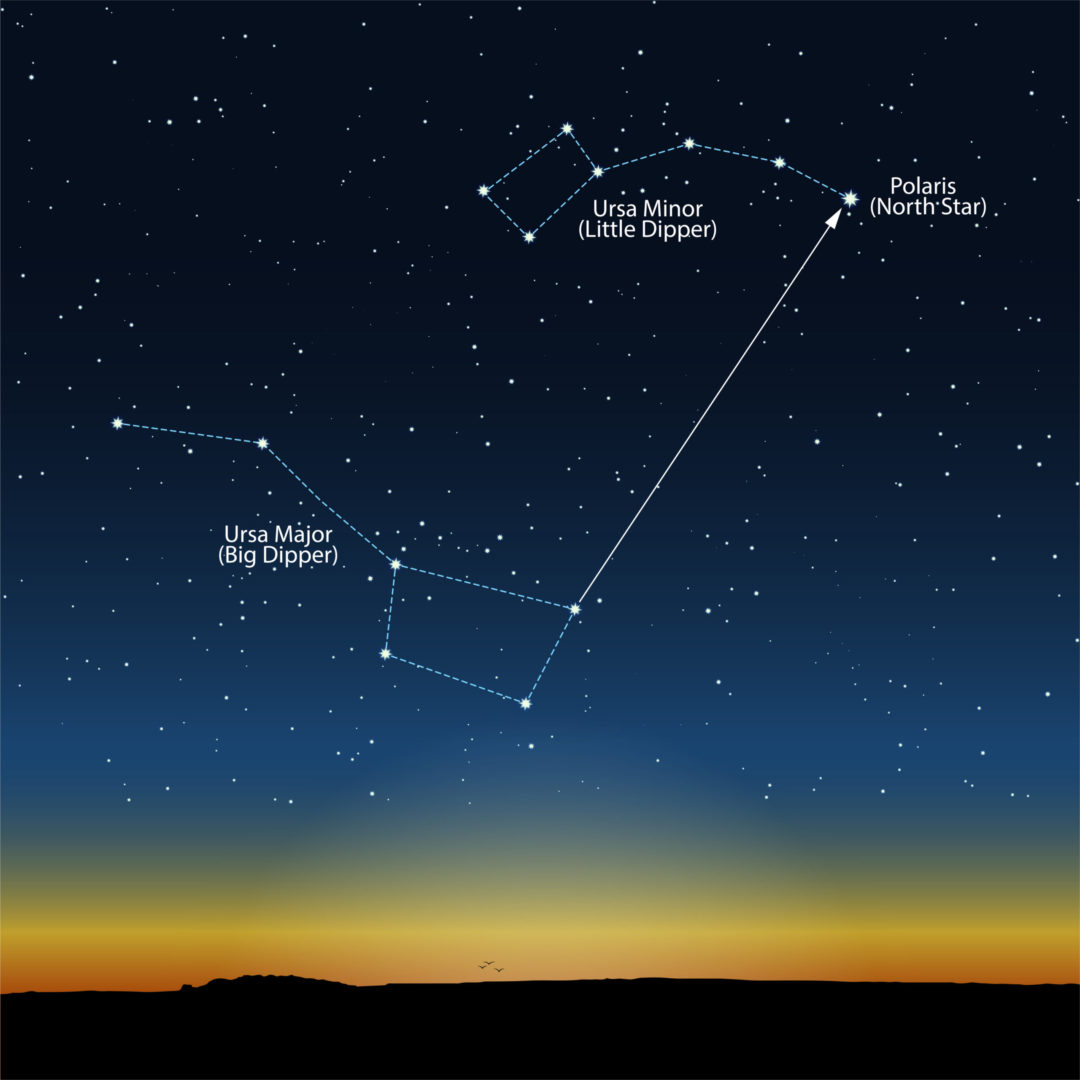




Constellation: Cassiopeia
Named after Queen Cassiopeia in Greek mythology, Cassiopeia is also known as The Celestial Bridge, Three Kings or Three Sisters. It’s shaped like the letter ‘W’ and is easily visible with the naked eye. It’s a constellation of five bright stars about the size of an outstretched hand.
Cassiopeia is a useful signpost for finding the North Star as it will always be directly opposite the Big Dipper, and therefore often high in the winter sky when the Big Dipper is at its lowest point on the horizon.



Asterism: Summer Triangle
The Summer Triangle consists of a collection of three bright stars, Vega, Altair and Deneb. It’s visible in the north at any time of year – even under light pollution – but, as the name suggests, the Summer Triangle is most prominent in summer.
For folk in the Northern Hemisphere, when the Summer Triangle starts to brighten it’s a good sign that spring has turned and summer is coming.
In early summer, Vega is the brightest star found in the eastern sky and the brightest star in the triangle. Holding (or imagining) a ruler or stick of about 30cm (12in) at arm’s length, with one end of the ruler obscuring Vega, you can plot a path to the right and down towards the horizon. Here you’ll find another very bright star, Altair. If you look to the lower left of Vega, you’ll find Daneb the third brightest star in the triangle. Congratulations, you’ve spotted the Summer Triangle! In midsummer the triangle will be high in the eastern sky and chances are you’ll notice it almost every time you gaze towards the stars.
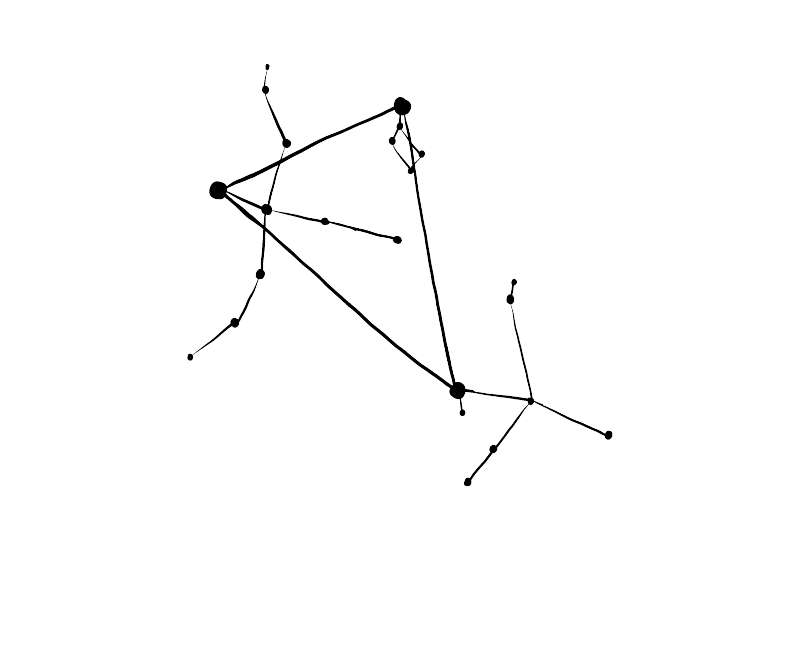

Tools to get you star gaze on!
Stargazing can become addictive, especially for kids when they start to recognise constellations. My daughter can’t leave the house on a clear night without looking for the Southern Cross or Orion’s pot. To begin with there’s no need to buy special tools. On a clear night away from the light of ‘civilisation’, there’s plenty to see with the naked eye. You definitely don’t need a telescope. But as you start to recognise more constellations you might want to add some tools to your kit.
Binoculars are pretty handy. A lightweight 7×50 or 10×50 magnification which can attach to a camera tripod works well. A DSLR (digital single-lens reflex) camera lens mounted on a decent tripod will help you kickstart your astrophotography career. Here are some helpful tools to consider:
☐ Binoculars, telescope or spotting scope (portable high-power telescope)
☐ DSLR camera
☐ Red light torch (a torch that gives you red light to see by, while at the same time keeping your eyes adjusted for the dark)
☐ Compass
☐ Star maps and guides
☐ Apps – Star Walk (iPhone) or Google Sky map For the best results you need to be away from any interfering light sources – that includes the campfire!
This is one of the many awesome guides and stories found in Tent Life: A Beginners Guide to Camping & The Outdoors by Doron Francis, Founder of Homecamp.



